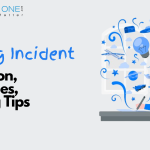Diaries, those intimate companions of our thoughts, have long served as a canvas for self-expression, a mirror reflecting our innermost emotions and experiences.
However, what happens when these personal narratives transcend the pages of secrecy and find themselves bound into books for the world to read? In this exploration, we delve into the fascinating world of diary entries published as books, uncovering the allure, impact, and transformative power of sharing one’s innermost musings with a broader audience.
- The Evolution of Diary Writing: Diaries have existed for centuries, capturing the human experience across cultures and epochs. Traditionally, diaries were private spaces that guarded secrets inscribed in the hidden corners of one’s life. The act of writing itself often served as a cathartic release, a way to process emotions, navigate challenges, or preserve cherished memories. Over time, societal shifts and technological advancements have altered the landscape of diary writing. From handwritten journals to digital platforms, the act of chronicling one’s life has adapted to changing times. Yet, the fundamental essence of diaries remains unchanged—a personal record of the human journey.
- Diaries Turned Literature: The Appeal of Personal Narratives
The transition from diary to published book marks a profound shift. What prompts individuals to share their most personal thoughts with the world? One reason lies in the universal appeal of personal narratives. Readers, often hungry for authenticity and relatability, find solace and inspiration in the raw, unfiltered emotions conveyed through diaries.
Renowned examples such as Anne Frank’s “The Diary of a Young Girl” exemplify the impact of personal narratives on a global scale. The power lies not just in the events described but in the unguarded emotions and vulnerabilities laid bare on each page. Readers connect with the genuine human experience, fostering empathy and understanding. - From Solitude to Solidarity: The Healing Power of Shared Experiences
Turning diary entries into published books is an act of courage and vulnerability. Authors take the risk of exposing their innermost selves, sharing not only moments of triumph but also navigating the depths of personal struggles. This act of transparency creates a powerful bridge between the author and the reader.
In this shared vulnerability, a sense of solidarity emerges. Readers grappling with similar emotions or experiences find solace in knowing they are not alone. The shared journey—the commonality of human struggles—fosters a sense of community. Whether it’s dealing with loss, love, or self-discovery, the transformative power lies in the collective strength drawn from shared experiences. - Diaries Across Genres: From Memoirs to Fiction
Diary entries turned into books come in various forms, spanning genres from memoirs to fiction. Authors may choose to present their diaries as straightforward autobiographies, recounting their life’s narrative. Alternatively, they might use the diary format as a foundation for fictional tales, weaving personal experiences into broader, imaginative narratives.
Sylvia Plath’s “The Bell Jar” is a prime example of how a semi-autobiographical novel can draw deeply from the author’s personal struggles. By blending reality with fiction, Plath crafted a work that resonates with readers on multiple levels, transcending the confines of a traditional diary. - Diaries as a Mirror to Society: Social Commentary and Cultural Exploration:
Diaries published as books often serve as mirrors, reflecting the societal and cultural contexts within which they were written. Anne Frank’s diary, written during the Holocaust, stands not only as a personal testimony but also as a historical document providing insights into the atrocities of World War II.
Authors, knowingly or unknowingly, become chroniclers of their times. Through their personal lenses, they capture the zeitgeist, offering future generations a glimpse into the complexities of the human experience in a specific era. - The Digital Age: From Blogs to Self-Publication
In the digital age, the transition from diaries to published books has become more accessible than ever. Blogging platforms serve as contemporary diaries, allowing individuals to share their thoughts with a potentially global audience. The ease of self-publication has further democratised the process, empowering authors to bring their diaries to the public without traditional gatekeepers.
Digital diaries, however, raise questions about the blurring lines between the public and private spheres. As bloggers turn their personal reflections into published works, the impact on the nature of personal expression and the expectations of an audience come under scrutiny. - Empowerment Through Narrative Control:
One of the most empowering aspects of turning diaries into published books is the control it grants the author over their narrative. In a world where external perceptions often shape personal stories, the ability to shape one’s own narrative becomes an act of autonomy. By sharing their stories on their own terms, authors reclaim control over their experiences, challenges, and triumphs.
This narrative control extends beyond the author’s life. It becomes a tool for advocacy, shedding light on issues, breaking stigmas, and inspiring change. Authors who share their struggles with mental health, identity, or societal expectations contribute to a broader conversation, fostering empathy and understanding. - The Pitfalls and Ethical Considerations:
While the act of turning diaries into published books is liberating, it is not without its challenges. The fine line between authenticity and exploitation requires careful navigation. Authors must grapple with ethical considerations, ensuring that their narratives respect the privacy of the individuals mentioned and adhere to a sense of responsibility to the truth.
The commodification of personal stories also raises questions about the impact of publishing for profit. Can the deeply personal act of diary writing coexist with the commercial demands of the literary market without compromising authenticity?
You may also like: Is Kindle Direct Publishing right for Your Next Book?
How can you get your Diary Entries published?
Turning diary entries into published books is a rewarding yet intricate process that involves several steps. Here is a guide on how to transform your diary into a book:
- Review and organise:
Reviewing and organising your diary entries is the crucial first step in turning them into a book. Begin by immersing yourself in the content, noting recurring themes, motifs, and significant events. Look for patterns that could form the backbone of your narrative. Identify the emotional arcs, conflicts, and resolutions within your entries. This initial analysis is essential for creating a cohesive and engaging storyline.
Organising entries can be done in two primary ways: chronologically or thematically. Chronological organisation allows readers to follow your journey in the order in which events occurred. This approach works well with straightforward narratives. On the other hand, thematic organisation involves categorising entries based on common themes or topics. This method allows for a more dynamic exploration of your experiences, jumping back and forth between different aspects of your life.
Consider the emotional flow of your story when deciding on the organisational structure. Whether you opt for a chronological or thematic approach, the goal is to create a logical and compelling narrative flow that keeps readers captivated. - Define Your Purpose:
Clearly defining the purpose of your book sets the tone and direction for your writing. Ask yourself why you want to share your diary entries with a broader audience. Is it to offer a deeply personal memoir, provide inspiration through fictionalised accounts of your experiences, or offer practical guidance in a self-help format?
Understanding your goal helps shape the narrative structure, tone, and level of detail you include. For a memoir, focus on authenticity and emotional resonance. If you are writing fiction inspired by your experiences, blend facts with creative storytelling. In a self-help book, distil your insights into actionable advice.
Knowing your purpose also aids in identifying your target audience. Are you writing for those who enjoy personal narratives, fiction enthusiasts, or individuals seeking guidance? Tailor your approach to resonate with the readers you aim to connect with, ensuring a more impactful and purposeful book - Edit and rewrite:
Editing and rewriting are integral steps in transforming raw diary entries into a polished and accessible book. Diary writing often captures the immediacy of emotions, but it may lack the coherence required for a broader audience. Edit entries for clarity, coherence, and consistency in style and tone.
Rewriting allows you to expand on brief entries, providing additional context, emotions, and details. Consider what information is essential for readers to understand your journey and connect with your experiences. Add depth to pivotal moments and characters, ensuring a richer and more immersive reading experience.
Strive to maintain the authenticity of your voice during the editing and rewriting process. While refining the language and structure, preserve the genuine emotions and reflections that make your diary unique. Balancing refinement with authenticity ensures your narrative resonates with readers while reaching its full potential. - Create a Narrative Arc:
Developing a narrative arc is like sculpting the skeleton of your story. Consider it the architectural blueprint that guides readers through the beginning, middle, and end of your narrative. The beginning introduces the setting, characters, and the central conflict or theme. This is the stage where readers become acquainted with your world. It’s an invitation, beckoning them to venture further.
The middle of the narrative arc involves the unfolding of events, character development, and rising tension. It’s where conflicts intensify, characters face challenges, and the plot thickens. This section keeps readers hooked, eager to discover how your story will evolve. Here, you have the opportunity to introduce twists, turns, and revelations that heighten anticipation.
The end is the resolution, where conflicts find closure, characters undergo transformation, and themes reach their culmination. A satisfying resolution leaves readers with a sense of fulfillment.Whether it’s a happy ending, a bittersweet conclusion, or a contemplative finale, it should resonate with the journey you’ve taken them on. Crafting a compelling narrative arc ensures that your story is not just a collection of entries but a captivating journey that readers will remember. - Develop Characters:
If your diary entries involve interactions with others, those characters become pivotal to your narrative. Fleshing out these characters involves providing enough detail to make them relatable, memorable, and integral to the story. Consider their personalities, motivations, and how they contribute to or hinder your personal journey.
Describe their physical attributes, but don’t neglect their inner worlds—thoughts, feelings, and aspirations. What roles do these characters play in your life? How do they influence your decisions and perspectives? Show their growth or impact as the story progresses.
Creating multidimensional characters enhances the richness of your narrative, allowing readers to form connections and empathise with the people in your life. Remember, characters don’t need to be perfect; flaws and imperfections make them authentic and relatable. - Maintain Authenticity:
During the editing and refinement process, preserving the authenticity of your voice is paramount. Authenticity is the heartbeat of a memoir or personal narrative. Readers are drawn to genuine, relatable narratives that reflect the human experience.
While polishing language and structure, be cautious not to strip away the raw emotions, spontaneity, and idiosyncrasies that make your diary unique. Authenticity breeds connection, and readers appreciate the sincerity that comes from sharing your unfiltered self. It’s the difference between reading a curated story and feeling like you’re sharing an intimate conversation with the author.
Your authentic voice is your literary fingerprint—no one else can replicate it. Embrace the imperfections, quirks, and nuances that make your narrative distinctly yours. - Add Reflection and Insight:
Inserting reflections and insights elevates your diary entries from mere observations to a profound exploration of your emotional landscape. Reflect on significant events, ponder their implications, and share the lessons learned. This layer of depth allows readers to delve into your internal world, understanding the emotional nuances of your experiences.
Consider why certain events had a lasting impact, how they shaped your worldview, or prompted personal growth. Share the moments of self-discovery, realisations, and the evolution of your perspectives. Insights provide context to the narrative, creating a more profound connection between your story and the reader’s own journey.
This introspective layer transforms your diary into a reflective memoir, allowing readers not only to witness your experiences but also to glean wisdom from the insights you’ve gathered along the way. It adds a timeless quality to your narrative, inviting readers to contemplate their own lives in tandem with your story. - Consider Ethical Considerations:
When your diary entries involve mentions of other people, it’s crucial to consider ethical considerations, especially in terms of privacy. The candid nature of diary writing may inadvertently include details that others might find sensitive or personal. As you transition from a personal diary to a published book, it’s essential to take steps to protect the privacy of individuals mentioned in your entries.
Consider changing names or identifying details to shield the identities of those involved. If your reflections involve potentially sensitive information about others, it’s advisable to seek their permission before including such details in your book. Open and honest communication can help navigate these ethical considerations, ensuring that your narrative respects the boundaries and privacy of those connected to your story.
Respecting the privacy of others not only aligns with ethical writing practices but also fosters a sense of trust with your readers. It demonstrates a thoughtful and considerate approach to storytelling, allowing you to share your experiences without compromising the well-being of those who shared parts of your journey. - Choose your medium:
Deciding on the medium for your book is a crucial step in the publishing process. Consider whether your book will be a physical copy, an e-book, or both. The choice of medium influences various aspects, including formatting, design, and distribution strategies.
If you opt for a physical copy, you’ll need to consider the layout, cover design, and print specifications. The tactile experience of holding a physical book may enhance the emotional connection readers have with your narrative.
On the other hand, e-books offer the advantages of accessibility and convenience. Readers can carry your story on their
digital devices, and e-books often provide interactive features that complement the reading experience.
Choosing both mediums might provide the best of both worlds, catering to readers with different preferences. Understanding your target audience and considering practical aspects, such as budget and distribution channels, will guide your decision on the medium for your diary-turned-book. - Formatting and Design:
The visual appeal of your book plays a crucial role in engaging readers. Paying attention to the formatting and design ensures that your diary entries are presented in a way that enhances readability and the overall aesthetic. Choose fonts that are easy on the eyes, consider layouts that provide a comfortable reading experience, and structure your chapters in a way that flows seamlessly. The goal is to create a visually inviting book that complements the narrative, making it an enjoyable experience for readers. Consistency in formatting contributes to a polished and professional look, reflecting the care you’ve put into presenting your story.
Images or illustrations, if relevant, can also be incorporated to add a visual dimension to your narrative. The overall design should align with the tone and theme of your book, enhancing the storytelling rather than distracting from it. - Seek professional help.
While your diary entries are deeply personal, seeking professional help in the form of an editor is a wise step in the publishing process. A professional editor brings an objective and experienced perspective to your manuscript. They can identify areas that may need improvement, offer constructive feedback, and ensure that your writing is polished and coherent.
Editors assist in refining your prose, checking for consistency, addressing grammatical errors, and ensuring a smooth flow throughout the narrative. Their input can elevate your book to a higher standard, making it more appealing to a broader audience. Having an editor is an investment in the quality of your work, and their expertise can make a significant difference in the final product. - Create a book proposal.
If your goal is traditional publishing, creating a book proposal is a necessary step. A book proposal is essentially a pitch that provides a comprehensive overview of your book and its market potential. It typically includes a synopsis that summarises your story, details about your target audience, a market analysis outlining the book’s commercial viability, and a sample chapter.
Crafting a compelling book proposal is crucial for capturing the attention of literary agents and publishers. It serves as a roadmap for your book’s journey into the publishing world. Be prepared to showcase not only the uniqueness of your story but also its market appeal and potential readership. A well-prepared book proposal increases the likelihood of attracting interest from agents and publishers, setting the stage for the next steps in your publishing journey. - Self-Publishing:
Self-publishing has become an increasingly popular option for authors seeking to independently bring their work to readers. Platforms like Amazon Kindle Direct Publishing (KDP) provide user-friendly tools that empower authors to publish their books in digital and print formats. The self-publishing process typically involves formatting your manuscript according to platform guidelines, creating a book cover, setting a price, and deciding on distribution options.
Amazon KDP, for example, allows authors to reach a global audience and retain a significant portion of the royalties. The platform offers resources, such as Kindle Create, to assist with formatting, and it provides a step-by-step publishing interface. Authors have control over the entire publishing process, from cover design to marketing strategies.
While self-publishing offers autonomy, it’s crucial to approach it with professionalism. Ensure that your book meets industry standards in terms of editing, formatting, and cover design. Self-published authors are responsible for every aspect of their book’s presentation, so meticulous attention to detail is key. - Design a cover:
The proverb “don’t judge a book by its cover” is often overlooked in the publishing industry. An eye-catching book cover is a powerful marketing tool that can significantly impact a reader’s decision to explore your book further. Whether you choose traditional publishing or self-publishing, investing in a professionally designed cover is essential.
If you’re working with a traditional publisher, they will likely have an in-house design team to create a cover that aligns with market trends and effectively represents your book. If you’re self-publishing, consider hiring a professional book cover designer or using online design tools that cater specifically to authors.
A well-designed cover communicates the genre, tone, and essence of your book. It’s the first impression your book makes on potential readers, and a visually appealing cover can contribute to increased discoverability and sales. Remember that your cover is an integral part of your book’s overall presentation, so invest time and resources into creating a design that captivates your target audience. - Marketing and Promotion:
Regardless of the publishing route you choose, effective marketing and promotion are vital for the success of your book. Develop a comprehensive marketing plan that considers various avenues for reaching your target audience.
Utilise social media platforms to create an online presence for yourself as an author. Establishing an author website provides a centralised space for readers to learn more about you and your work. Engage with your audience through platforms like Instagram, Twitter, or Facebook, sharing updates, behind-the-scenes insights, and promotional content.
Consider traditional promotional methods, such as book signings, speaking engagements, or collaborations with bookstores. Leverage book review sites and seek endorsements from influential figures in your genre. Explore opportunities for virtual book tours or interviews on podcasts to broaden your reach. - Connect with readers:
Connecting with readers is a crucial aspect of an author’s journey, and it goes beyond the initial stages of book promotion. Actively engaging with your readers establishes a sense of community and fosters a deeper connection between the author and their audience. There are various ways to achieve this connection.
Participate in or initiate discussions in book clubs dedicated to your genre or specific themes in your book. Online platforms, such as Goodreads, provide spaces for authors to connect with readers. Joining relevant social media groups or creating author profiles on platforms like Instagram, Twitter, or Facebook allows you to share updates and insights and interact directly with your readership.
Consider organising or participating in author events, whether virtual or in-person. Book signings, Q&A sessions, or online discussions provide opportunities for readers to connect with you on a personal level. Hearing their thoughts, questions, and feedback can be invaluable for understanding the impact of your work and building a supportive community around your writing. - Continued Reflection:
The process of transforming personal diary entries into a published book is undoubtedly transformative. As an author, it’s essential to engage in continued reflection, considering how the entire experience has impacted you and your perspective.
Reflecting on the journey from diary entries to a published book allows you to understand the evolution of your storytelling skills, the challenges you overcame, and the lessons you learned. Consider the emotional journey you underwent while revisiting and sharing intimate aspects of your life. Acknowledge the growth, both as a writer and as an individual, that occurred throughout the process.
Examine how the act of sharing your diary has influenced your relationship with your own experiences. Has it provided closure, offered new insights, or allowed you to see familiar events from a different angle? Understanding the impact of your storytelling on yourself contributes to a deeper connection with your work.
Continued reflection also positions you well for future writing endeavors. Take note of what worked well in the process, areas where you faced challenges, and how reader feedback has shaped your understanding of your own narrative. This ongoing self-awareness contributes to the refinement of your writing skills and enhances your ability to connect with readers on a profound level.
In essence, the act of sharing a diary is not just a one-time event but a continuous exploration of self-expression and connection. Embrace the evolving nature of your relationship with your writing and readers, allowing each reflection to inform and inspire your ongoing literary journey.
You may also like: The Role of a Book Publisher: From Manuscript to Bestseller
In the evolving landscape of personal expression, the journey from diaries to published books stands as a testament to the power of storytelling. Whether as memoirs, novels, or digital narratives, these shared diaries forge connections, bridge gaps, and offer readers a profound sense of shared humanity.
Read: Amazon Ads for Authors: How Authors Can Promote Their Books Through Amazon Ads
Authors, daring to transform their private musings into public narratives, embark on a journey of self-discovery and empowerment. As readers, we are invited to witness the transformative power of these diaries, understanding that within the intimate pages lie not just personal stories but the collective heartbeat of the human experience. In this convergence of the personal and the universal, the act of sharing one’s diary becomes an invitation to empathise, connect, and celebrate the beautifully complex tapestry of life.
















